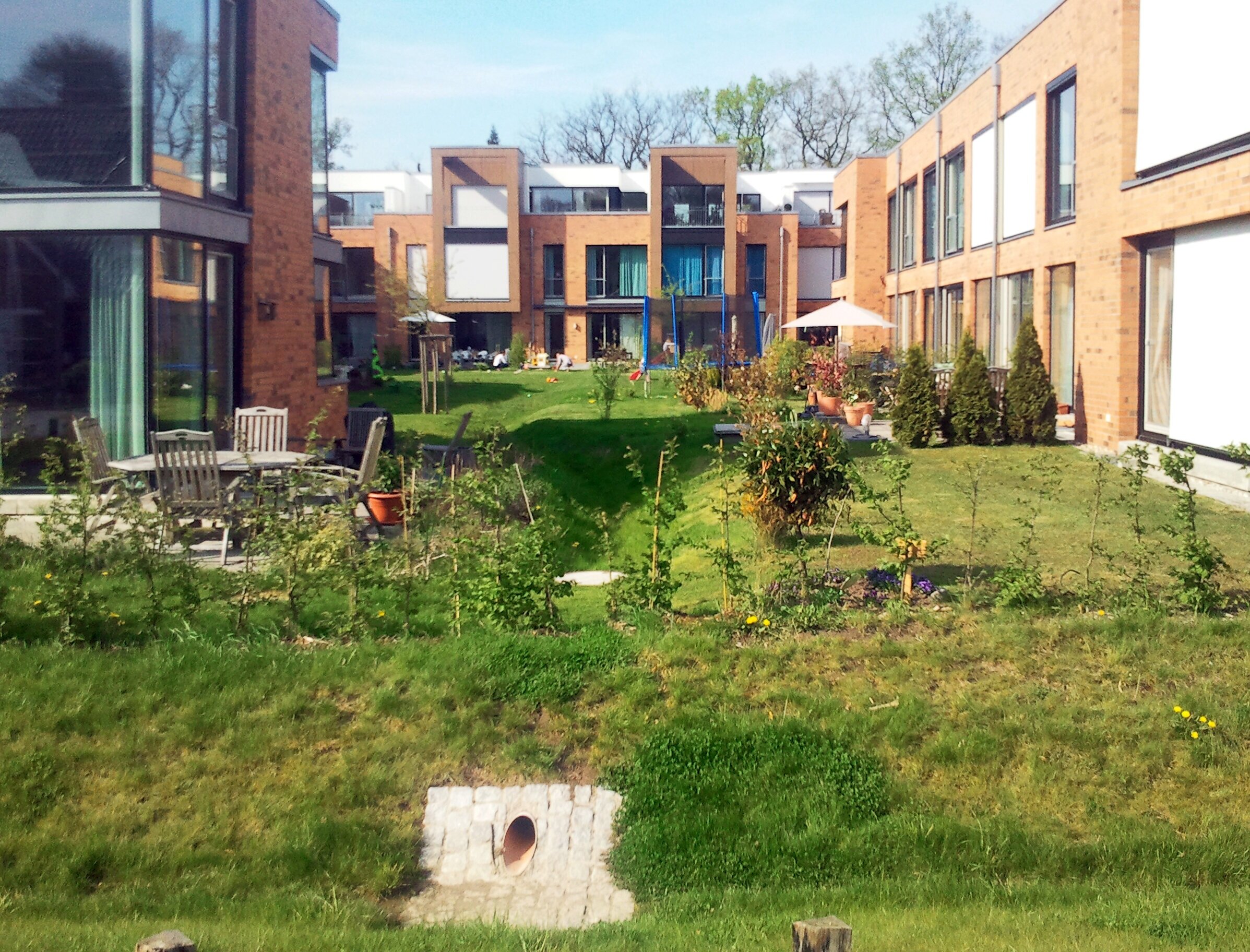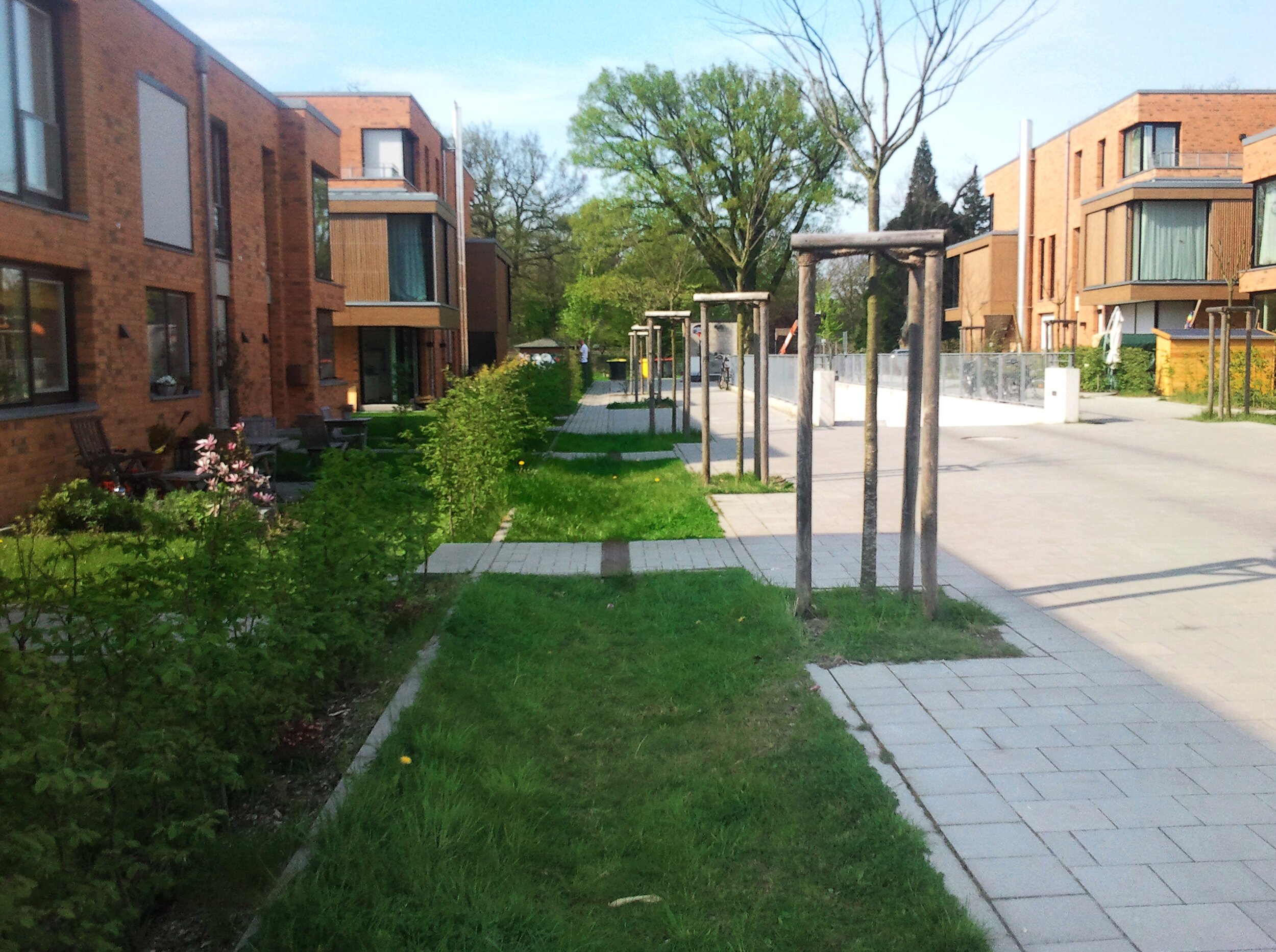
A Pioneering Model: Exemplifying How Innovative Concepts and Strategies for Rainwater Management
A transformative blend of open water runnels, retention swales, and natural ponds has brought about a notable metamorphosis in the urban landscape of Ohlsdorf12 "Kleine Horst" in Hamburg, Germany. The deliberate integration of these elements not only alters the visual appeal of the surroundings but also contributes significantly to the aesthetic quality and cohesion of the urban settlement. The infusion of these water features imparts a sense of liveliness, fostering happiness and well-being among the residents.
Kleine Horst stands as a pioneering model, exemplifying how innovative concepts and strategies in surface drainage, as well as a qualitative and high-valued approach to stormwater management, can be seamlessly introduced into an urban settlement. The successful implementation of these ideas not only enhances visual aesthetics but also sets a benchmark for sustainable and harmonious urban development, reflecting a commitment to both environmental consciousness and the well-being of the community.
DREISEITLconsulting GmbH
Climate Adaptation Design Guidelines
This project was originally produced by Atelier Dreiseitl under the leadership of Herbert Dreiseitl. Since its merger in the year 2013 with the Ramboll Group A/S this project and the copyright is owned by Ramboll.
Location
22337 Hamburg, Germany
Client
City of Hamburg
Timeline
Design: 2001
Construction: 2009
Site Area
9.3 ha
Status
Completed
The aim of rainwater management is to achieve something that is optimally tailored to local conditions where drainage systems that takes into account the needs of sustainable and ecological management.

The critical interplay between diverse surfaces and substrates, characterized by their high rain absorption and storage capacity, and strategically chosen vegetation forms the cornerstone of effective rainwater management. This meticulous pairing is essential to create an environment where specific vegetation is carefully selected to facilitate near-natural cycles of rainwater processes.
By incorporating surfaces and substrates designed to absorb and store rainwater efficiently, along with the thoughtful integration of appropriate vegetation, the environment allows for the establishment of near-natural drainage cycles. These cycles encompass various stages, including drainage, retention, cleansing, and the intricate processes of infiltration, seepage, and percolation of rainwater.
The selection of vegetation plays a pivotal role in these processes, as each plant is chosen with precision to contribute to the overall functionality and ecological balance of the rainwater management system. This approach ensures not only the visual appeal of the landscape but also the sustainable and harmonious coexistence of natural elements within the designed environment.
The fusion of a consistently vibrant design with self-regulating functional processes creates an immediate and immersive sensory experience. This dynamic connection between form and function transcends the traditional boundaries of aesthetics and functionality, engaging the senses on multiple levels.

The vision was to find a nature-orientated, economical, and representational solution for surface drainage and design. Today, Ohlsdorf “Kleine Horst” stands as a pioneer for climate adaptation in residential areas.
















